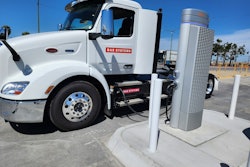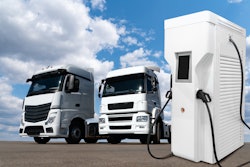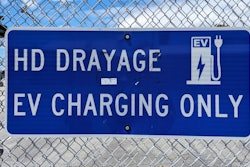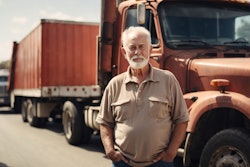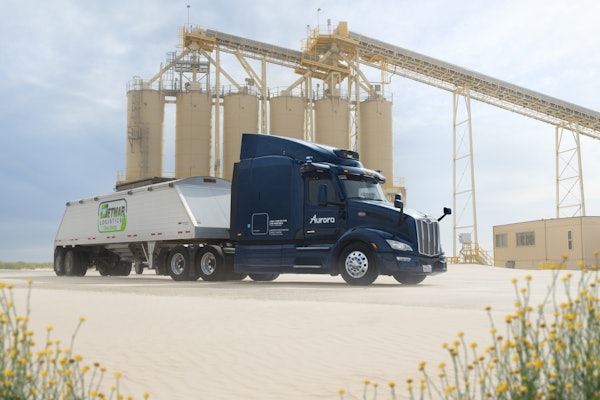There are some common facts about moving freight by truck, irrespective of continent or technology.
Trucks haul a majority of freight traveling over land. I love trains and intermodal transport, but the facts are facts: trucks haul most of the freight in North America (60% to 70%), Australia (~75%), Asia (60% to 70%), Africa (80%), Europe (80%), and South America (70%).
All those trucks require tires — a lot of tires. One estimate is that worldwide more than 1.7 billion truck tires are produced annually. Another estimate is that there may be as much as 22 gallons of oil consumed in making a single truck tire. All those tires also have to go from a factory to an end user, so there is also a significant number of trucks that haul loads of tires.
The majority of trucks run on fossil fuel. While alternative fuels and zero-emission vehicles are making progress penetrating vehicle markets, the vast majority of freight is running on diesel and gasoline. All that fuel has to get to the trucks in the field, so a significant number of trucks haul fuel for those end users. Also supporting all that fuel movement are more than 8,800 ocean-going tankers, mostly running on various forms of oil. All that fuel movement uses a lot of fuel.
“You have to spend money to make money” is a quote that actually dates back to Roman playwright Titus Plautus, from about 200 BC. I propose a modern corollary to this sage advice, “You have to spend energy to use energy.”
We get so focused on the fuel efficiency of a specific vehicle and the cost of operating that vehicle, we can lose sight of the fact that just getting energy to the vehicle itself requires a lot of energy.
That gallon of diesel (or 200 gallons of diesel) you just pumped into your truck at the truck stop had to get to that truck stop. How many tires are used annually just moving fuel around so a freight truck can get filled at any truck stop? I talked with one fuel provider who said that most of the truck stops they service need a daily stream of tankers to keep up with demand at the pump. Some sites may have three or more tankers per day delivering fuel. Let’s say your truck stop services 300 semi trucks per day, each taking in 100 gallons of fuel at the pump. That is 30,000 gallons of fuel pumped per day, or roughly three tanker trailers full. It doesn’t matter how big the on-site fuel tanks are, the fuel has to get there.
There are no free rides. The fuel at the pump got there, in many cases, by another truck. Every mile of freight movement has associated miles of travel by tanker trucks. Napoleon reportedly said that an army marches on its stomach. For every soldier fighting at the front, there are many supporting them by getting supplies to them. In the 1991 Desert Storm conflict, the “tooth-to-tail ratio” (the ratio of the number of soldiers supplying a single fighting soldier) is estimated at more than 1 to 5. For every fighting soldier, five others were engaged in supply efforts. In the Iraq conflict, the ratio was 1:8.
Freight trucks are not much different. Think about all of the infrastructure in the supply chain that is needed to keep the truck driver moving.
Efficiency is about using less energy to move freight. You can measure that at the truck in MPGs or miles per kilogram of hydrogen, or miles per kilowatt hour of electricity or whatever, but that is not giving you the big picture of how much energy is really in use to move that mile.
A system perspective goes beyond just the one truck to look at the entire support system for that truck.
Reducing energy use inherently also reduces emissions. Burn less diesel and you produce less carbon dioxide and particulate emissions. Buying a new truck which has better MPGs automatically reduces emissions while also reducing your operating costs and improving your profitability.
But it goes well beyond just that one truck’s emissions. Burning less diesel means the tanker trucks supplying truck stops had to deliver less fuel. Tire manufacturers had to supply fewer tires, etc. Improving fuel economy has a domino effect across a spectrum of other things.
So, making fewer tires means the tire company and the tire distributor likely make less money, likely need fewer manufacturing people, likely need fewer deliveries, etc.
Using less energy likely means fewer jobs, fewer trucks, less energy, less infrastructure; all that “tail” in the “tooth to tail ratio.”
You can’t escape that being more efficient invariably negatively impacts someone else’s economics.
And that is the heart of the objections against adopting more fuel-efficient vehicles. Jobs and profits will change. A fleet may get better performing trucks, reduced operating costs, and achieve higher profits, but it comes at the expense of the people supplying fuel, supplying tires, and everything else that keeps the truck running.
There are no free rides. Change always has tradeoffs.
One example: Let’s say the aspirations are true that battery electric vehicles have less downtime and less repairs than diesels. That means dealers will have less parts to sell and fewer opportunities to make money from servicing them. They may need fewer repair technicians. The people delivering parts to the dealership will have fewer trips. It snowballs. Even local restaurants and stores may be impacted because drivers supplying the dealership and those using it will make fewer visits.
I think the fear of change related to tighter emission standards such as the EPA GHG 2027 rules or the California ACT rules are tied to the reality that making trucking more efficient and reducing their environmental impact means that some companies and some people will lose out economically.
That is the story of America’s businesses since day one. New things replace old ones and there is change.
The telegraph replaced pony express riders. Wired telephones replaced the telegraph. Cell phones replaced wired ones. Texting is replacing talking. Videos are replacing texting. Change always comes with tradeoffs. Its neither good nor bad, necessarily.
Film photography had a great run originating in the 1800s. It became so mainstream that there were Fotomats in parking lots and nearly every grocery store and pharmacy, much like today’s coffee shops. When was the last time you had film developed? Where did all that infrastructure, all those jobs and businesses go? Where did all those Blockbuster video rental employees go? The people that made and distributed VCR tapes? Change can be tough.
Managing the downsides of change should be a focus of the new technologies. It’s not just encouraging change, its dealing with its ramifications.
Change is unavoidable.
We need to figure out how to provide new jobs, new business opportunities, etc. as we transition away from fossil fueled freight.
Those are issues common to everyone, everywhere.




